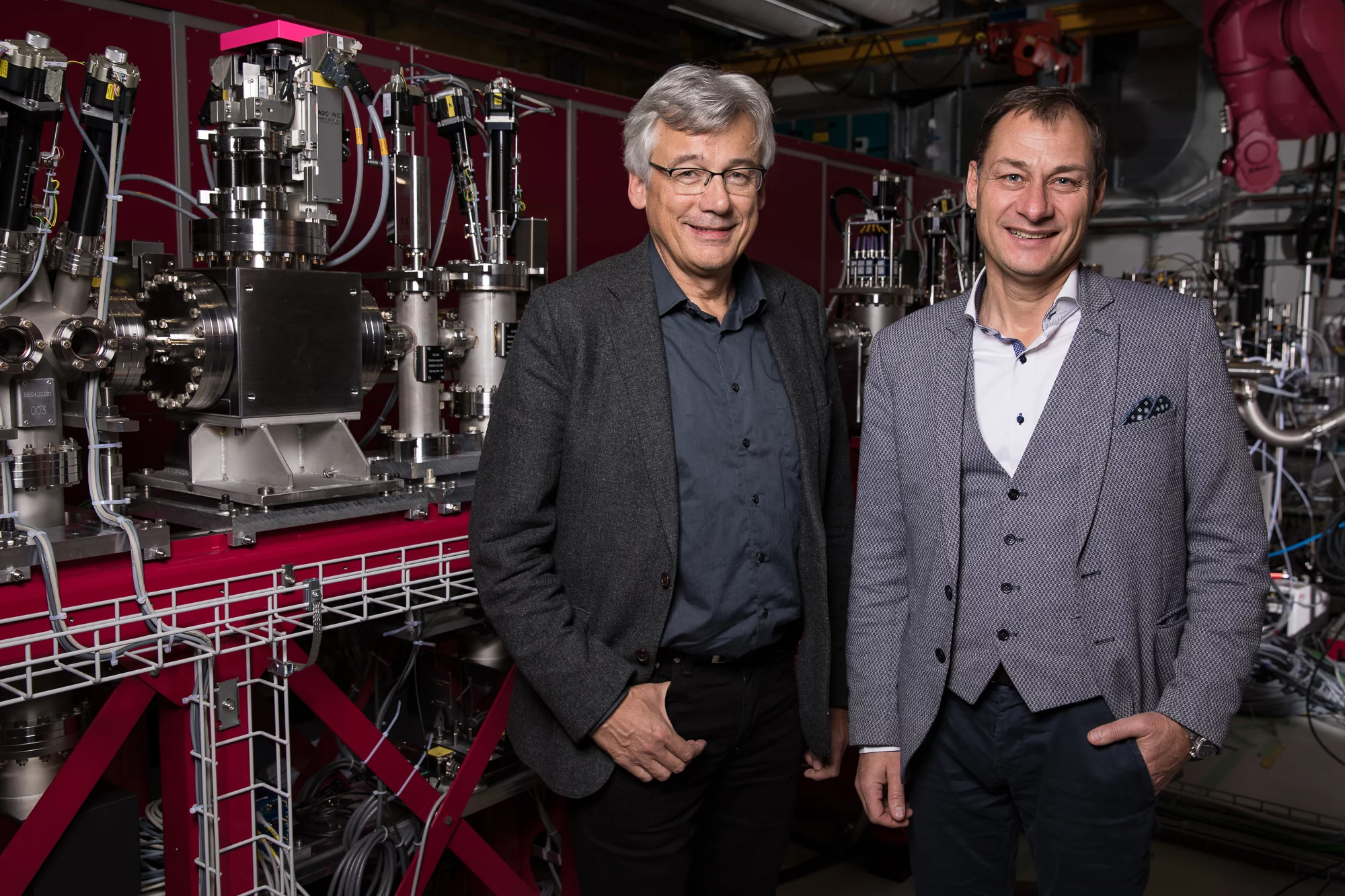The years of careful planning and construction have paid off: At the newest large-scale research facility of the Paul Scherrer Institute PSI – the X-ray free-electron laser SwissFEL – the first experiment has been carried out successfully. With that, two goals have been achieved: First, a new scientific result is already expected. Second, the interaction of the many individual components of the highly complex facility is being optimised.
When the very first experiment at a new large-scale research facility succeeds, the researchers responsible have a right to feel elated. This is what took place at the end of November at the X-ray free-electron laser SwissFEL: There is a great sense of achievement for PSI.
The PSI researchers, together with a research group from the University of Rennes in France, conducted the first in a series of so-called pilot experiments at SwissFEL between 27 November and 4 December 2017. The experiment had one clear scientific goal: to investigate the electrical and magnetic properties of titanium pentoxide nanocrystals. Titanium pentoxide is a potential candidate for electronic components of the future, for example, for rewritable data storage units with high recording density. With suitable laser pulses, nanocrystals of titanium pentoxide can be selectively shifted between two states – electrically conducting and semiconducting. This induced transition is exactly what the researchers investigated in the first experiment with SwissFEL’s high-energy X-ray light pulses.
Like a gigantic puzzle
This experiment and the additional pilot experiments will also serve to optimise the operation of the facility as a whole, again and again, before regular user operations at SwissFEL begin in January 2019.
After many years of planning and construction, we know every part of the 740-metre-long SwissFEL inside out
, says Luc Patthey, who is the project leader for photonics at SwissFEL. With the first experiment, the parts also needed to work together for the first time and mesh like pieces of a gigantic puzzle. It's beautiful to see that this succeeded. Because the goal is clear: By the end of 2018, we want to make a research platform of international standing, one that functions with Swiss precision and reliability, available to the users of SwissFEL.
Pilot experiments in three phases
In all, three phases of pilot experiments are planned, which will extend to the end of 2018. In parallel with the pilot experiments, the energy and output of SwissFEL will be increased
, explains Hans Braun, who is the project leader for the accelerator at SwissFEL. By summer 2018, we will also have reached this goal.
The official inauguration of SwissFEL was held one year ago, in December 2016. Since then, all of the components have been brought into service and their alignment has been optimised. In parallel, the so-called experiment stations were set up. At one of these, the first experiment has now taken place. SwissFEL generates short pulses of X-ray light with laser-like characteristics. With these light pulses, it is possible to follow extremely fast processes such as the formation of new molecules in chemical reactions, the detailed, changing structure of vitally important proteins, or the precise composition of materials. At SwissFEL researchers will gain insights that would not be possible with other methods available today. The findings will expand our understanding of nature and lead to practical applications such as new drugs, more efficient processes for the chemical industry, and new materials in electronics.
Like the other large-scale research facilities of PSI, SwissFEL too will be accessible to external researchers; the needs of Swiss universities and industry have already been given special consideration during the planning stages. Worldwide, only four comparable facilities are in service.
Text: Paul Scherrer Institute/Laura Hennemann
About PSI
The Paul Scherrer Institute PSI develops, builds and operates large, complex research facilities and makes them available to the national and international research community. The institute's own key research priorities are in the fields of matter and materials, energy and environment and human health. PSI is committed to the training of future generations. Therefore about one quarter of our staff are post-docs, post-graduates or apprentices. Altogether PSI employs 2100 people, thus being the largest research institute in Switzerland. The annual budget amounts to approximately CHF 380 million. PSI is part of the ETH Domain, with the other members being the two Swiss Federal Institutes of Technology, ETH Zurich and EPFL Lausanne, as well as Eawag (Swiss Federal Institute of Aquatic Science and Technology), Empa (Swiss Federal Laboratories for Materials Science and Technology) and WSL (Swiss Federal Institute for Forest, Snow and Landscape Research).
(Last updated in May 2017)
Additional information
https://www.psi.ch/swissfel/first-pilot-experimenthttps://www.psi.ch/swissfel/highlights
Contact
Dr. Luc Patthey, Photonics Project Leader, SwissFEL,Paul Scherrer Institute, 5232 Villigen PSI, Switzerland
Telephone: +41 56 310 45 62, E-mail: luc.patthey@psi.ch [German, English, French]
Dr. Hans Braun, Accelerator Project Leader, SwissFEL,
Paul Scherrer Institute, 5232 Villigen PSI, Switzerland
Telephone: +41 56 310 32 41, E-mail: hans.braun@psi.ch [German, English]

